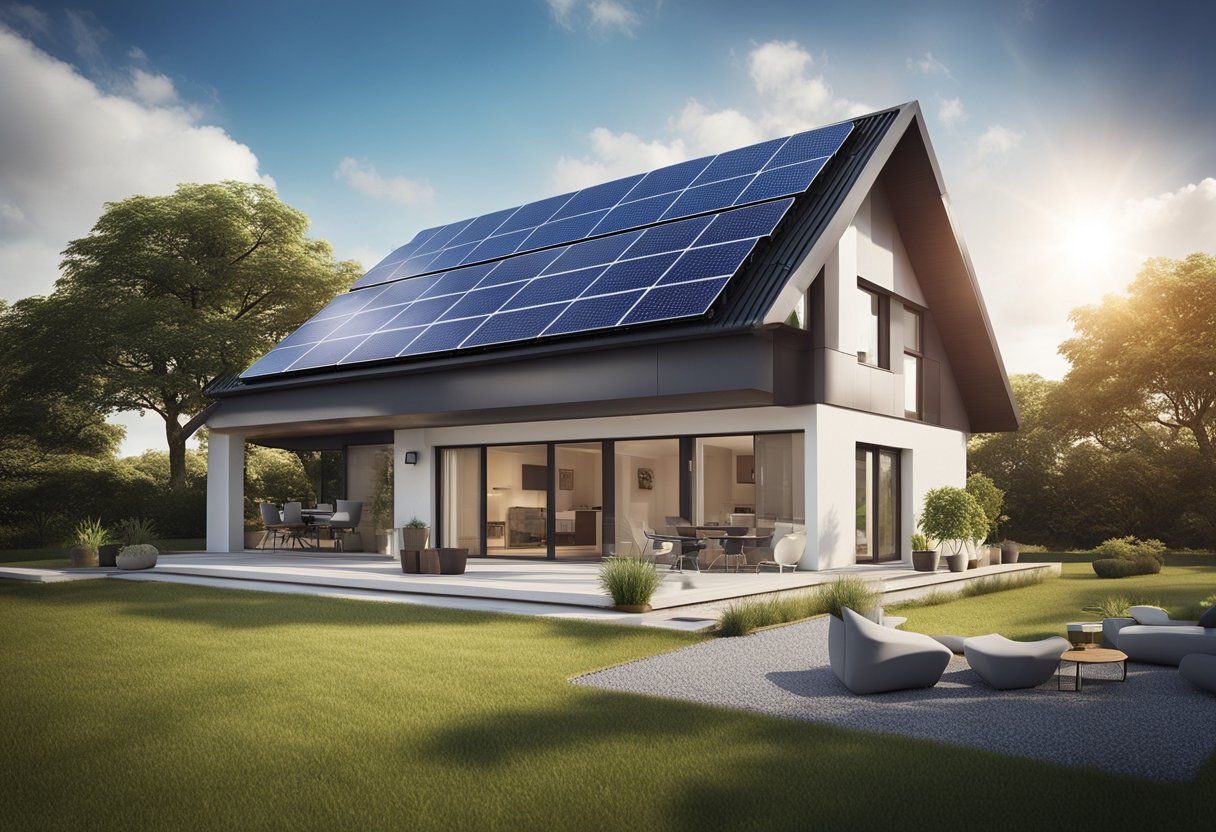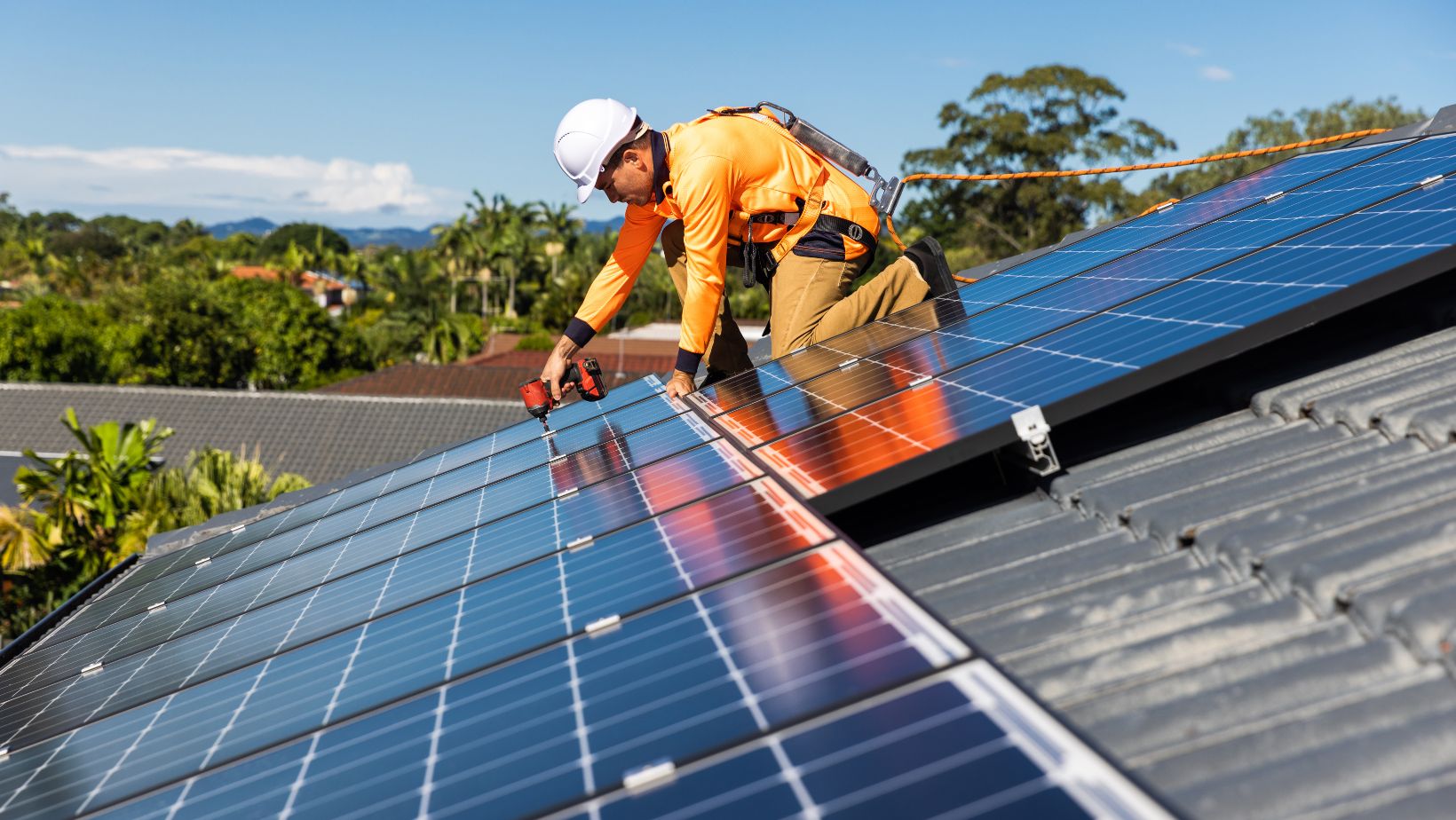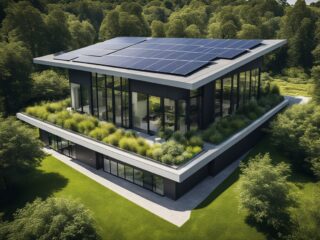
Incorporating solar power into home design can significantly enhance energy efficiency. By utilizing innovative solar-powered design ideas, homeowners can reduce their energy bills and lower their carbon footprint. This approach not only benefits the environment but also increases the property’s value and appeal.
Exploring various elements such as solar panels, energy-efficient windows, and passive solar heating can transform a home into a sustainable energy hub. These design ideas cater to diverse preferences, allowing individuals to customize solutions that fit their lifestyle while maximizing energy efficiency.
Fundamentals of Solar-Powered Homes
Understanding Solar Energy
Solar energy harnesses the sun’s radiation to generate electricity or heat. It is available in two primary forms: photovoltaic (PV) systems for electricity and solar thermal systems for heating.
In residential applications, PV systems convert sunlight directly into electricity through solar cells. The efficiency of a solar system depends on factors such as location, placement, and sunlight exposure. Solar energy can significantly reduce utility bills and lower carbon footprints, making it an attractive option for eco-conscious homeowners.
Types of Solar Panels
There are three main types of solar panels used in homes:
- Monocrystalline: Made from single-crystal silicon, these panels are highly efficient and space-saving but come at a higher cost.
- Polycrystalline: Made from multiple silicon crystals, these panels are less expensive but generally offer lower efficiency compared to monocrystalline options.
- Thin-Film: These panels are lightweight and flexible, allowing for versatile installations, but they usually have a lower efficiency rate.
When considering commercial and residential solar panel installation in Dallas, evaluating the benefits and trade-offs of each panel type is critical for selecting the most suitable option.
Solar Power Storage Solutions
Solar power storage solutions allow homeowners to store energy generated during peak sunlight hours for use later.

This capability is essential for maximizing energy efficiency and ensuring a steady power supply. Common storage options include:
- Lithium-Ion Batteries: Known for their high efficiency and energy density, these batteries are widely used to store solar energy.
- Lead-Acid Batteries: While more affordable upfront, lead-acid batteries have a shorter lifespan and lower efficiency compared to lithium-ion batteries.
- Flow Batteries: These offer longer lifespans and scalability but may come with higher initial costs.
Maximizing Home Energy Efficiency
Strategic Panel Placement
The installation of solar panels should prioritize areas that receive maximum sunlight throughout the day. Roofs with a south-facing orientation are ideal, as they capture more sunlight. Factors to consider include:
- Tilt Angle: Adjust the panels to an optimal angle based on geographic location for improved energy capture.
- Shade Analysis: Assess nearby trees or buildings that could cast shadows on the panels during peak sunlight hours.
Regular maintenance, such as cleaning panels, also enhances efficiency by ensuring that dust or debris does not obstruct sunlight.
Energy-Efficient Appliances and Lighting
Selecting energy-efficient appliances reduces overall household energy consumption. Look for devices with the Energy Star label, which indicates a higher standard of energy efficiency. Key appliances to consider include:
- Refrigerators: Opt for models that use less electricity.
- Washing Machines: Choose high-efficiency models that consume less water and power.
Replacing incandescent bulbs with LED options can reduce energy usage dramatically. LEDs last longer and consume up to 80% less energy than traditional bulbs.
Insulation and Passive Solar Design
Proper insulation is essential to maintain comfortable indoor temperatures and reduce heating and cooling costs. Insulation materials should be evaluated in attics, walls, and basements to minimize heat loss.
Passive solar design techniques can also contribute significantly to energy efficiency. Key strategies include:
- Window Placement: Design windows to optimize natural light while minimizing heat gain in warmer months.
- Thermal Mass: Use materials like concrete or stone that absorb heat during the day and release it at night.
This approach not only enhances comfort but also decreases reliance on mechanical heating and cooling systems.
Technological Innovations in Solar Energy
Solar Energy Monitoring Systems
Solar energy monitoring systems are vital for optimizing solar energy production. They enable homeowners to track energy generation, consumption, and system performance in real-time. These systems provide detailed insights through user-friendly interfaces, often accessible via smartphones or computers.
Key features include alerts for performance issues and historical data tracking. Homeowners can adjust their energy usage based on the data, making informed decisions to increase efficiency. With these systems, homeowners often see improved energy savings and overall system health, leading to better return on investment.
Smart Grid Integration
Smart grid technology facilitates the seamless connection of solar energy systems to the electrical grid. This integration allows homeowners to not only consume solar energy but also to sell excess power back to the grid. Advanced metering infrastructure plays a crucial role in this process, providing accurate data on energy flow.

Furthermore, smart grids enhance grid reliability and resilience, accommodating fluctuations in energy demand and supply. Homeowners benefit from dynamic pricing models, optimizing their energy spending. Integration also supports renewable energy sources, bolstering the transition to sustainable energy systems on a larger scale.
Emerging Solar Technologies
Emerging solar technologies are revolutionizing solar energy production. Innovations like bifacial solar panels capture sunlight from both sides, increasing energy yield. Additionally, solar skins allow for custom aesthetics, integrating solar cells into roofing materials without compromising design.
Another noteworthy advancement is perovskite solar cells, which promise higher efficiency at lower costs. These newer materials are lightweight and flexible, expanding installation options. The ongoing research in solar technologies continues to drive efficiency improvements and potential cost reductions, benefiting homeowners and the environment.
Implementing Solar Design in Your Home
Assessing Your Home for Solar
Before installing solar panels, homeowners should evaluate their property. Key factors include roof orientation, shading, and the angle of the roof. A south-facing roof with minimal obstructions is ideal for solar exposure.
Next, it’s advisable to conduct an energy audit. This identifies current consumption patterns and potential energy savings. Homeowners can use this information to decide the number of panels needed.
Additionally, consider local regulations and permits, especially in urban areas like Dallas. Some neighborhood associations may have guidelines on solar installations that must be followed.
Planning Your Solar Project
Planning requires a detailed approach to meet energy needs effectively. Homeowners should research and consult qualified solar providers in Dallas for professional installation.
Budgeting is critical. Initial costs can vary widely based on the system size and chosen technology. Homeowners should explore financing options and available incentives, such as tax credits or rebates.
Designing the system layout is also essential. This includes selecting panel types, inverters, and mounting methods. A well-thought-out design will optimize energy output and long-term benefits.
Regular maintenance should also be part of the plan to ensure the system operates efficiently over its lifespan.



